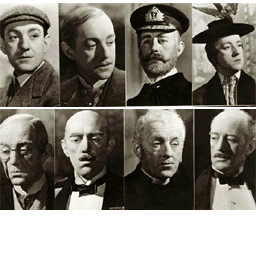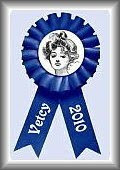Ten years ago today, Sir Alex Guiness, an exceptional British actor, died at age 86. He was, to me (Victoria) the very personification of Englishness, from his portrayals of Dickensian guttersnipes to an obsessed British officer.
I’ve been writing about British movies on this blog from time to time and casting about for more info on old favorites has led me in some interesting directions and lots of orders from Netflix. I simply had to see Kind Hearts and Coronets again. And then Lavender Hill Mob. I can’t remember when I first saw these films — perhaps when I was in college studying great film comedies (I was a radio-tv-film major at Northwestern University).
But both remained with me to the extent that I couldn’t wait to see them again. Both films owed their brilliance to Guiness (1914-2000), even though other actors were also outstanding. Then I got to reading about Guiness, who wrote several autobiographies retelling his life stories. He had worked with the greatest of British actors such as Sir John Gielgud and Sir Lawrence Olivier. I’m planning to write about them soon.
Sir Alec appeared in many Shakespeare plays on the stage and on film. He won an Oscar for his performance in The Bridge on the River Kwai, 1957. If you have never seen this brilliant film about Americans and British soldiers who were Japanese prisoners during WWII, find it on TV, rent or order it immediately. Directed by the brilliant David Lean and also starring William Holden, you are bound to find it a memorable experience.
Guiness also appeard in David Lean’s films Lawrence of Arabia, Doctor Zhivago, and Passage to India.
Beginning in 1971, Guiness appeared in the the Star Wars films of George Lucas as the seer Obi-wan Kenobi. Reportedly, he hated the role and his notoriety coming from it. However, he had believed in the first film so much that his salary included a percentage of the gross profits, which made him a very rich man. Apparently what he disliked was the autograph- seeking children who pestered him mercilessly. He is also quoted as saying that he suggested Obi-wan be killed off because he hated speaking “those bloody awful banal lines.”
 To the right are pictures of the eight roles Guiness played in Kind Hearts and Coronets, a most excellent film. Sir Alec was a master of multiple appearances and characters. As a matter of fact, though he played leading men and in various Noel Coward roles as a sophisticated gentleman, he is mostly known for his character parts. An Arab shiek, a Communist party official, an obsessed colonel, an earnest spy — he could do almost anything.
To the right are pictures of the eight roles Guiness played in Kind Hearts and Coronets, a most excellent film. Sir Alec was a master of multiple appearances and characters. As a matter of fact, though he played leading men and in various Noel Coward roles as a sophisticated gentleman, he is mostly known for his character parts. An Arab shiek, a Communist party official, an obsessed colonel, an earnest spy — he could do almost anything. Author John LeCarre, who wrote the novel Soldier, Sailor Tinker, Spy, was so impressed by Sir Alec’s performance in a television version of his work (see left) that he used the portrayal as an inspiration for further stories about MI5 agent George Smiley.
Author John LeCarre, who wrote the novel Soldier, Sailor Tinker, Spy, was so impressed by Sir Alec’s performance in a television version of his work (see left) that he used the portrayal as an inspiration for further stories about MI5 agent George Smiley.Guinness wrote three volumes of his life story: Blessings in Disguise (1985), My Name Escapes Me (1996), and A Positively Final Appearance (1999). He recorded each of them as an audiobook. His wife of 62 years followed him in death just two months later in October 2000.






















